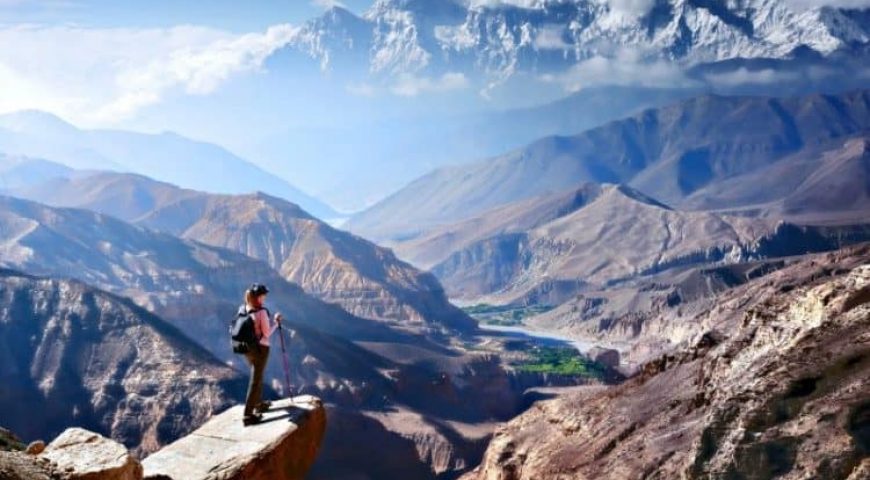
Best Season for Trekking in Nepal
With the highest mountains in world, Nepal has tremendous variation in climates. The lowland plains are tropical, the midland hills are temperate, and the high mountains have sub-arctic and arctic conditions. For trekkers, the fall and the spring offer the best clarity (mountain views are a big reason why we travel to Nepal) and mild temperatures with the least precipitation. Here is some information about Nepal’s trekking seasons:
Autumn Season (September-November) < Best Season >
Autumn is considered the best season to trek in Nepal. You can experience better visibility of tantalizing mountains, green hills and excellent weather. Weather is generally clear with mild to warm days and cold nights. The possibilities of natural disasters diminish, making it a safe season to trek. The Nepalese festivals Dashain and Tihar are celebrated during this time.
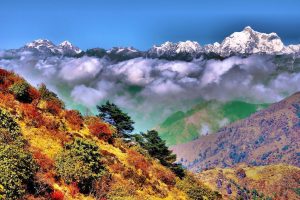
Winter Season (December- February)
In winter, the Himalayan region freezes over and the snow falls. Trekking can be challenging in the higher altitudes because the trail can be covered with snow. In the winter you should trek at lower altitude below 3000m. The temperature of Himalayan region will be up to -18-degree Celsius, hilly regions 0 to 5 degree Celsius whereas in plain regions 10 to 15 degree Celsius.
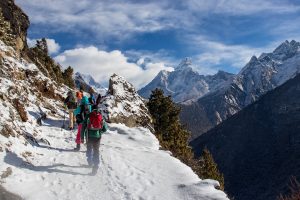
Spring Season (March-May) <Good Season>
The blooming flowers, lush greenery, and sparkling mountains make for an excellent background to spring trekking. Spring feels like a delight with singing birds, beautiful views, and abundant wildflowers. Weather will be mild at lower elevation but cold at higher elevation. In spring, mornings are usually crystal clear. However, in the afternoon clouds bring rain showers.
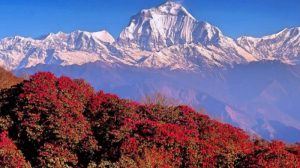
Summer Season (June-August)
In summer, mornings are cloudy with rain in the afternoons and evenings. Trekking is very uncomfortable because the trial becomes muddy, wet, and leech-infested. You risk injury in the wet terrain. Furthermore, there is higher chance of natural disasters; mainly landslides in the hilly regions. If you trek, you must not forget to carry insect repellants. The temperature of Himalayan regions will be 16 to 20-degree Celsius, hilly regions 20 to 30 degree Celsius whereas the plain regions 34 to 39 degree Celsius. Although this is not a good season to trek, the summer is best for botanists and researchers in forest and higher altitudes. However, places like Manang, Mustang and Dolpo are located in a rain shadow. Summer is the best time for these regions. Temperatures are mild and the weather is not so fierce.
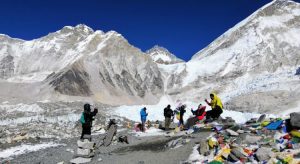
When is the Monsoon Season for Nepal Trekking?
The monsoon season generally runs from June to August, though that can change a little in certain areas, extending sometimes into early September. Trekking in Nepal in the monsoon season is not advisable, as the rains in the summer months in Nepal can be heavy and dangerous. After weeks of heavy rainfall, hillsides start to become unstable, and landslides are a common occurrence in the monsoon season, as can be seen from the many news reports of dangerous mudslides and landslides that can be seen on the news around the world. Trekking during the monsoon in an area where rains can be heavy is foolhardy, and dangerous to yourself and others.
When should I go trekking in Nepal?
Mid of September to mid of December is considered the best time to trek in Nepal. Autumn is considered the best season to trek in Nepal. You can experience better visibility of tantalizing mountains, green hills and excellent weather. Weather is generally clear with mild to warm days and cold nights.
